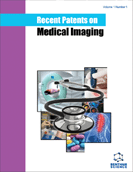Abstract
Objective: We present a full description of our virtual mammography simulator, which was already introduced in a previous short version. Herewith we give many details omitted there.
Materials: We work with a professional mammographer and a transparent breast phantom. The phantom contains artificial nodules, and their displacement under compression can be easily tracked through a transparency sheet with a printed millimetre scale. Compared with many other works in the literature, for instance, our approach is the first one that includes a transparent breast phantom. Moreover, we utilize the Surface Evolver, which is a general-purpose simulator of physical experiments with applications in many areas of knowledge. Our model allows to add and to work with different internal parts of the breast simultaneously, and the patent is a tool that helps identify such parts.
Methods: With the Surface Evolver we have implemented a program that simulates the main steps of taking mammographies. These steps are reproduced in a totally virtual environment. With the mammographer, and the transparency millimeter sheet fixed on its upper plate, we performed compressions on the phantom and recorded them in videos. The videos show the displacements of the nodules from different viewpoints. We are still equating these trajectories in order to implement them in our model.
Results: We have obtained a virtual mammography simulator of which the source code is fully available. It reproduces all the main steps of taking a real mammography. However, nodule trajectories will only be implemented in a forthcoming work. Herewith we use the term nodule but our simulator will also track microcalcifications, which count on specific Computer Aided Detection/Diagnosis (CAD) like the patent. They are much smaller than nodules, which also have devoted CAD-systems like the patents.
Conclusion: We conclude that the Surface Evolver makes our programs relatively short, easy to handle and to understand. We have not worked with any patients in our experiments but a professional gynaecologist checked, tested and approved the virtual mammographer. All body data used in our work refer to a hypothetical volunteer.
Keywords: Breast phantom, computational modelling, Computer aided detection/diagnosis (CAD), nodule trajectories, phantom, surface evolver, virtual mammography, X-ray, X-ray images.
Graphical Abstract
 12
12

